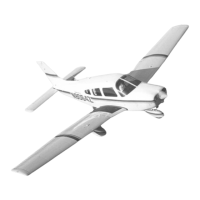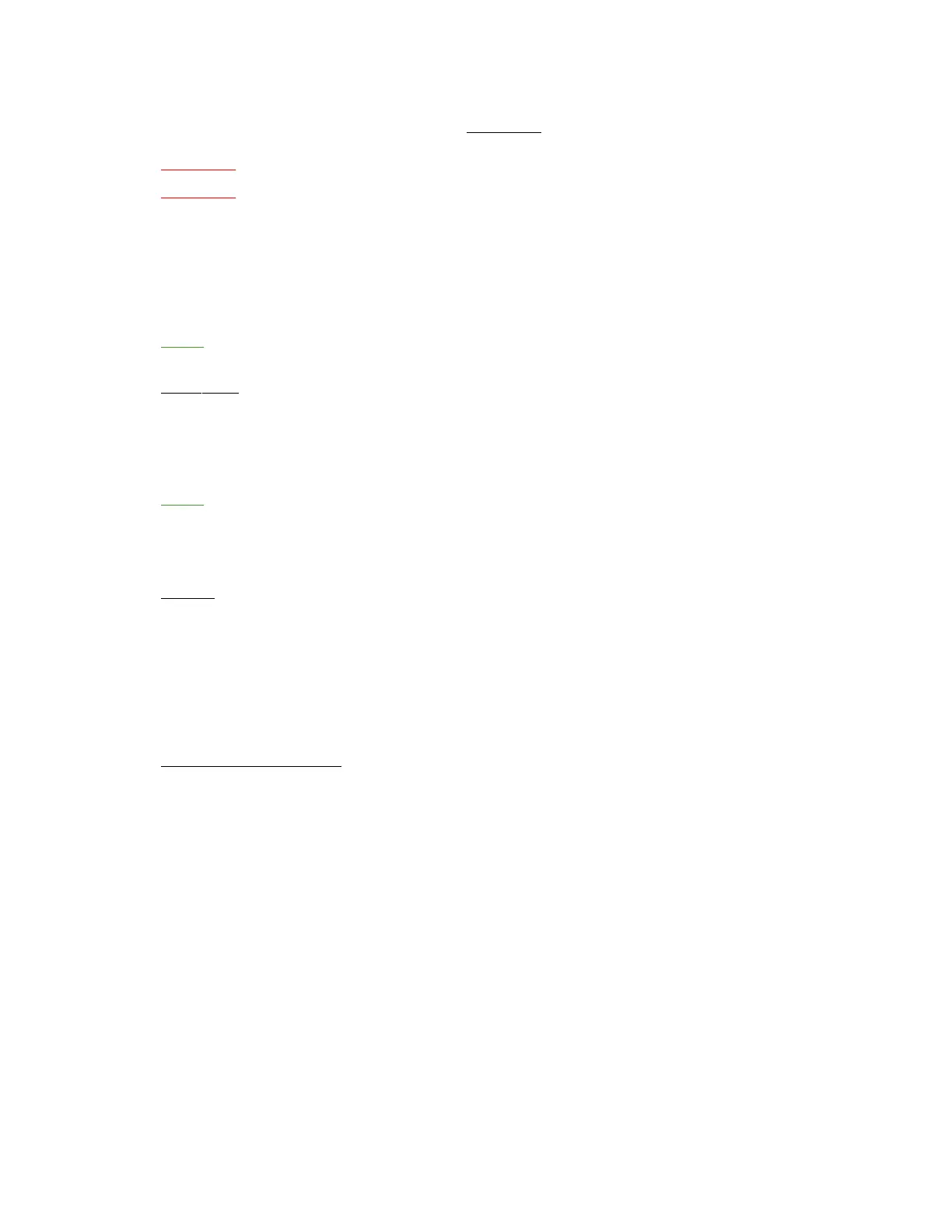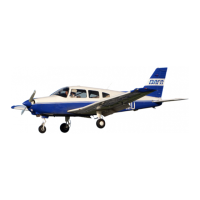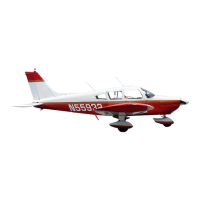PIPER AIRCRAFT, INC.
PA-28-161, WARRIOR III
MAINTENANCE MANUAL
PAGE 1
Nov 30/06
4E23
55-00-00
GENERAL
WARNING: NO ACCESS HOLES ARE PERMITTED IN ANY CONTROL SURFACES.
WARNING: THE USE OF PATCH PLATES FOR REPAIRS OF ALL MOVABLE TAIL SURFACES IS
PROHIBITED. THE USE OF ANY FILLER MATERIAL NORMALLY USED FOR REPAIR OF
MINOR DENTS AND/OR MATERIALS USED FOR FILLING THE INSIDE OF SURFACES
IS ALSO PROHIBITED ON ALL MOVABLE TAIL SURFACES.
This chapter describes removal, installation, and specific repair procedures for the empennage
component parts (i.e. - stabilator and tab, vertical stabilizer (fin), and rudder). The overall structure of the
airplane and general repair procedures are described in Chapter 51.
NOTE: When torquing structural assemblies, standard torque values are to be used as found in Chart 2,
91-10-00, unless otherwise stated in this section.
1. Description
The all metal empennage group is a full cantilever design consisting of a stabilator, vertical stabilizer
(fin), and rudder, all with removable thermoplastic tips. The stabilator has a trim tab attached that is
controllable from the cockpit. The stabilator also incorporates a one channel main spar that runs the full
length of the stabilator and hinges to the aft bulkhead assembly of the fuselage.
NO
TE: The Warrior III Parts Catalog, P/N 761-897, provides detailed views of the individual structural
components.
All exterior surfaces are coated with enamel or acrylic lacquer. As an option the airplane may be
completely primed with zinc chromate or equivalent.
2. Repairs
Structural repairs must be made in accordance with procedures and practices described in the latest
revision of FAA Advisory Circular 43.13-1. Specific, limited, repair procedures are described herein in
55-20-00, 55-30-00, and 55-40-00. To assist in making repairs, Figure 1, 51-00-00, identifies the type
and thickness of various skin materials used. Never make a skin replacement or patch plate from
material other than the type of the original skin, or of a different thickness than the original skin. The
repair must be as strong as the original skin. However, flexibility must be retained so the surrounding
areas will not receive extra stress.
3. Control Surface Balancing
A. Checking Balance
The movable control surfaces have been statically balanced at the time of installation at the factory
and normally should not require rebalancing. Where possible the control surfaces were set with the
balance weight on the heavy side of the limits, to permit limited repair or paint touch-up without
adjusting the balance weight. It should be noted however, that spare control surfaces are delivered
unpainted and the static balance will not necessarily fall within the limits provided, especially on
stabilators and rudders. All replacement control surfaces, or surfaces that have been repainted or
repaired, should be rebalanced when completed according to the procedures and limits given in
55-20-00 (Stabilator) or 55-40-00 (Rudder), as applicable.
Before balancing any control surface, it must be complete including tip, trim/servo tabs and tab
actuating arms or push rods with bearings as applicable, and all optional equipment which is
mounted on or in the control surface when it is flown, including paint, position lights and wiring,
static wicks, scuff boots, etc.
If optional equipment is added or removed after balancing, the control surface must be rebalanced.
During balancing, trim/servo tabs must be maintained in their neutral positions.

